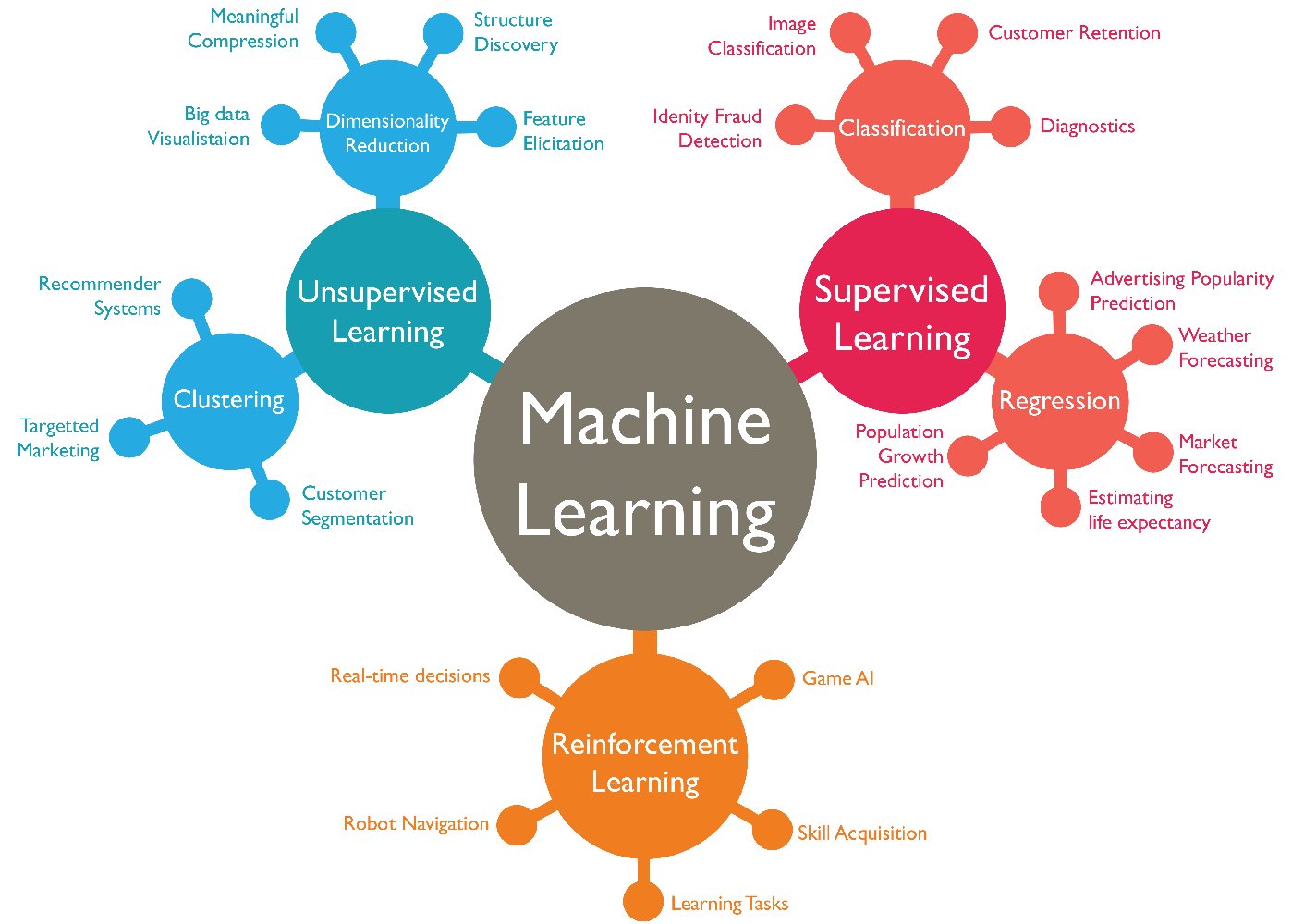
Machine Learning techniques
Machine learning is the art and science of Giving computers the ability to learn to make decisions from data without being explicitly programmed. Machine Learning systems can be classified according to the amount and type of supervision they get during training. There are four major categories: supervised learning, unsupervised learning, semisupervised learning, and Reinforcement Learning.
- Supervised Learning
- Unsupervised Learning
- Reinforcement Learning
- Supervised Learning: In supervised learning, the training set you feed to the algorithm includes the desired
solutions, called labels.The spam filter is a good example of this: it is trained with many example emails along with their class (spam or ham),
and it must learn how to classify new emails.
- Classification: Is typical supervised learning task.Here are some of its applications:
- Image Classification
- Identity Fraud Detection
- Customer Retention
- Diagnostics
- Regression :
is another typical task, to predict a target numeric value, such as the price of a car,
given a set of features (mileage, age, brand, etc.) called predictors.
Some regression algorithms can be used for classification as well, and vice
versa. For example, Logistic Regression is commonly used for classification, as it can
output a value that corresponds to the probability of belonging to a given class.
Here are some of its applications:
- Advertising Popularity Reduction
- Weather Forecasting
- Market Forecasting
- Estimating life expectancy
- Population Growth Prediction
Here are some of the most important supervised learning algorithms:
- k-Nearest Neighbors
- Linear Regression
- Logistic Regression
- Support Vector Machines (SVMs)
- Decision Trees and Random Forests
- Neural networks
- Classification: Is typical supervised learning task.Here are some of its applications:
- Unsupervised Learning : In unsupervised learning, the training data is unlabeled.
The system tries to learn without a teacher.
- Dimensionality Reduction : is a related task, in which the goal is to simplify the data
without losing too much information. One way to do this is to merge several correlated
features into one. For example, a car’s mileage may be strongly correlated with its
age, so the dimensionality reduction algorithm will merge them into one feature that
represents the car’s wear and tear. This is called feature extraction.
Here are some of the most important supervised learning algorithms:
- k-Nearest Neighbors
- Linear Regression
- Logistic Regression
- Support Vector Machines (SVMs)
- Decision Trees and Random Forests
- Neural networks
- Big Data Visualisation
- Meaningful Compression
- Structure Discovery
- Feature Elicitation
- Clustering :s the task of dividing the population or data points into a number of groups such that data points in
the same groups are more similar to other data points in the same group and dissimilar to the data points in other groups. It is
basically a collection of objects on the basis of similarity and dissimilarity between them.
Here are some of its applications:
- Recommender Systems
- Tragetted Marketing
- Customer Segmentation
Here are some of the most important unsupervised learning algorithms:
- K-Means
- DBSCAN
- Hierarchical Cluster Analysis (HCA)
- Principal Component Analysis (PCA)
- Kernel PCA
- Locally Linear Embedding (LLE)
- Dimensionality Reduction : is a related task, in which the goal is to simplify the data
without losing too much information. One way to do this is to merge several correlated
features into one. For example, a car’s mileage may be strongly correlated with its
age, so the dimensionality reduction algorithm will merge them into one feature that
represents the car’s wear and tear. This is called feature extraction.
Here are some of the most important supervised learning algorithms:
- Reinforcement Learning : Reinforcement Learning is a very different beast. The learning system, called an agent in this context, can observe the environment, select and perform actions, and get rewards in return.It must then learn by itself what is the best strategy, called a policy, to get the most reward over time. A policy defines what action the agent should choose when it is in a given situation.